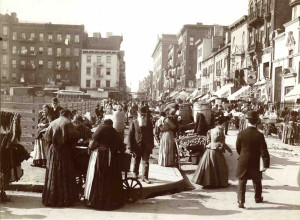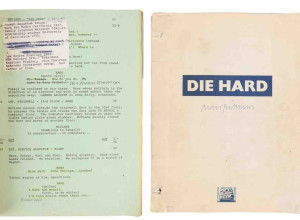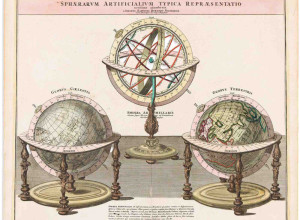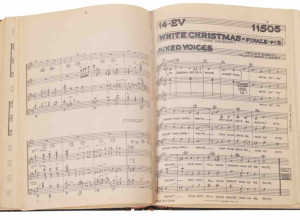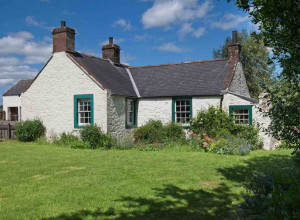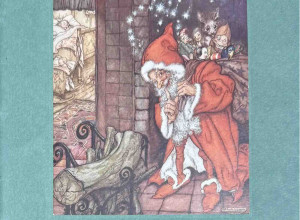March 20, 2010 |
Where History Lives
If you find yourself driving through New Jersey and have a couple of free hours on your hands, you might consider visiting the Thomas Edison National Historical Park in West Orange, a truly remarkable concentration of material objects from the golden age of invention, and for scholars and researchers the repository of what is estimated to be five million papers and documents relating to the work of a self-educated creative genius. As national parks go, this one might not share top billing with the Grand Canyon, Yosemite or Niagara Falls, but it lacks nothing in the form of illuminating the can-do spirit of the American Industrial Revolution and showcasing the marvels of gee-wizardry. Most of the 1,093 patents granted to Edison were for inventions that were developed here
Recently reopened after a six-year $13 million renovation that included the installation of an elevator and various interactive displays, the complex--known informally in its time as Edison's "invention factory"--is now welcoming the public once again, and allowing visits throughout the various working spaces and laboratories, where teams of innovators once worked to develop such modern marvels as the phonograph, a fluoroscope to view x-ray images, machines to extract iron from ore, processes to streamline the manufacture of cement, cylinder recorders for office dictation, and nickel-iron-alkaline storage batteries. A motion picture projector synchronized with a phonograph that he called the kinetophone was developed here as well; it led to the opening of the world's first movie studio, which visitors can see on the third floor, complete with an original Steinway piano used to audition show-biz hopefuls.
Built in 1887, this facility was ten times larger than the one Edison had used for ten years at nearby Menlo Park, where he invented the electric light system. If you had no idea what is contained on these grounds--and if there were no signs to identify it as a national park--the temptation would be to drive right by the three-story brick structure, assuming it to be one of many nineteenth-century industrial sites so typical of the northeast.
Schooled at home as a child by his mother, Edison was a largely self-taught autodidact, and among the many fascinating holdings here is a 10,000-volume library still shelved in his personal working area. Between two book cases in an alcove off to one side is a small bed, placed there by Edison's wife so the great thinker could take an occasional catnap. An inveterate note-taker and doodler, Edison was forever sketching away in his notebooks, of which 3,500 survive; seeing some of these, in fact, was my primary interest in a recent visit, graciously arranged and hosted by Leonard DeGraaf, archivist for the Thomas Edison National Historical Park.
The Edison site is one of three National Park Service properties that maintains substantial collections of original manuscripts and archives, and functions as a research facility for scholars; others include the Colonial home of the poet Henry Wadsworth Longfellow in Cambridge, Mass., and the house of master garden architect Frederick Law Olmsted in the Boston suburb of Brookline. Also part of the Edison complex--which was presented to the National Park Service by the Edison family in 1962--is the family mansion, Glenmont, set atop a scenic hill just a couple blocks away, and open to visitors as well. Well worth a trip.
Recently reopened after a six-year $13 million renovation that included the installation of an elevator and various interactive displays, the complex--known informally in its time as Edison's "invention factory"--is now welcoming the public once again, and allowing visits throughout the various working spaces and laboratories, where teams of innovators once worked to develop such modern marvels as the phonograph, a fluoroscope to view x-ray images, machines to extract iron from ore, processes to streamline the manufacture of cement, cylinder recorders for office dictation, and nickel-iron-alkaline storage batteries. A motion picture projector synchronized with a phonograph that he called the kinetophone was developed here as well; it led to the opening of the world's first movie studio, which visitors can see on the third floor, complete with an original Steinway piano used to audition show-biz hopefuls.
Built in 1887, this facility was ten times larger than the one Edison had used for ten years at nearby Menlo Park, where he invented the electric light system. If you had no idea what is contained on these grounds--and if there were no signs to identify it as a national park--the temptation would be to drive right by the three-story brick structure, assuming it to be one of many nineteenth-century industrial sites so typical of the northeast.
Schooled at home as a child by his mother, Edison was a largely self-taught autodidact, and among the many fascinating holdings here is a 10,000-volume library still shelved in his personal working area. Between two book cases in an alcove off to one side is a small bed, placed there by Edison's wife so the great thinker could take an occasional catnap. An inveterate note-taker and doodler, Edison was forever sketching away in his notebooks, of which 3,500 survive; seeing some of these, in fact, was my primary interest in a recent visit, graciously arranged and hosted by Leonard DeGraaf, archivist for the Thomas Edison National Historical Park.
The Edison site is one of three National Park Service properties that maintains substantial collections of original manuscripts and archives, and functions as a research facility for scholars; others include the Colonial home of the poet Henry Wadsworth Longfellow in Cambridge, Mass., and the house of master garden architect Frederick Law Olmsted in the Boston suburb of Brookline. Also part of the Edison complex--which was presented to the National Park Service by the Edison family in 1962--is the family mansion, Glenmont, set atop a scenic hill just a couple blocks away, and open to visitors as well. Well worth a trip.





